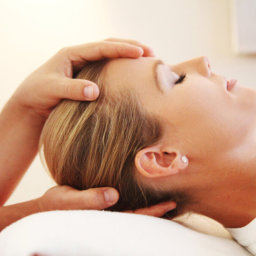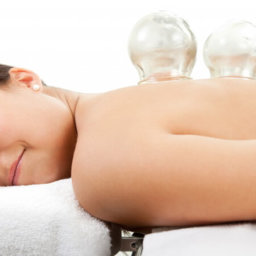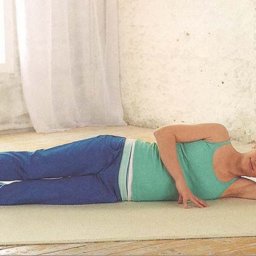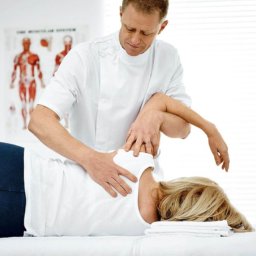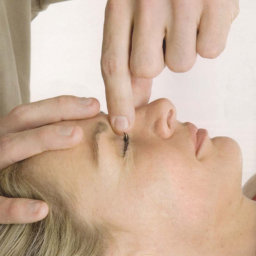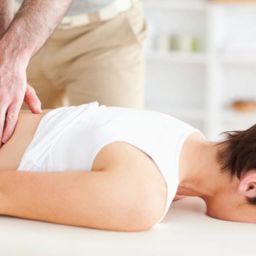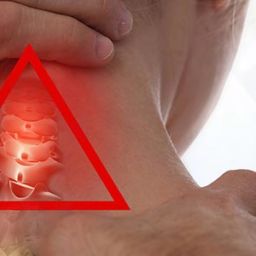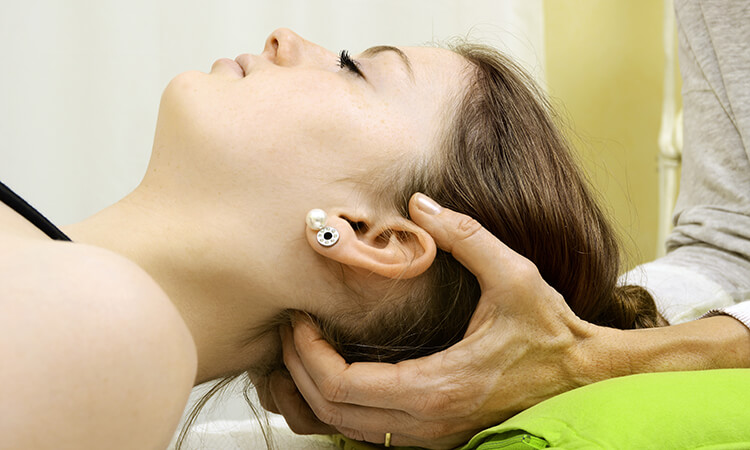
Engage Specific Tissues
CranioSacral Therapy (CST), because of its ability to engage specific tissues in the body with great precision, is an ideal modality with which to address the immune system. Using CST it is possible to directly map inflammation in the body, on a micro level.
One can tell exactly which tissues are inflamed, what aspects of the immune system are involved in that inflammatory process, and to some extent to what the immune system is reacting, all simply by palpating the movement of the immune system in response to the craniosacral rhythm.
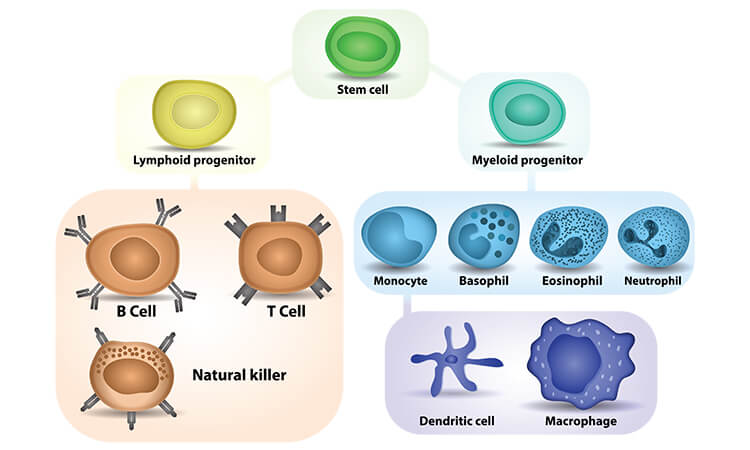
The immune system, which consists of a loose network of 10 to 50 billion cells of various kinds, all acting together and communicating with each other chemically and energetically, can often seem a bit esoteric.
Tissue is easy to palpate, and is easily affected by manual therapy. It is less obvious that this is true of the immune system. The immune system, however, is involved in every issue that we treat as manual therapists. If the client is experiencing a symptom, there is some degree of inflammation, and the immune system is involved.
This involvement may be primary, as in the case of an infection or an autoimmune condition, or it may be secondary, in which case simply releasing fascial restrictions may be enough to allow the inflammatory response to completely abate.
Most often, the situation is somewhere between these two extremes, however, and simply releasing fascial restrictions does not completely eliminate the inflammation. Thus it is critical that we as manual therapists be able to address this important system of the body.
These types of white blood cells help the immune system.
A Brief History of CranioSacral Therapy
CranioSacral Therapy was developed by John Upledger, D.O., O.M.M., in the mid-1970s and derives out of the osteopathic tradition.
Andrew Taylor Still developed osteopathy itself in the late 1800s. Osteopathy is based upon the principle that the body possesses its own Inner Wisdom and ability to heal, though sometimes the body needs additional resources to do so.
The role of the therapist is to provide those additional resources to the Inner Wisdom. The therapist does not directly make changes to the tissue; the therapist supports the Inner Wisdom and the Inner Wisdom makes the changes the Inner Wisdom deems to be important. Thus, the role of the therapist becomes that of a facilitator.
Andrew Still had a student in the 1920s named William Sutherland, D.O. Sutherland was intrigued with the movements of the bones of the skull and developed an approach to therapy he called Cranial Osteopathy.
While there are some similarities between Cranial Osteopathy and CST, there are also major differences.
In the early 1970s, Upledger had the opportunity to assist a surgical procedure that involved exposing the dural tube of the patient (the membrane which surrounds the spinal cord).
During this surgery, Upledger directly witnessed a rhythmic expansion and contraction of that tube. Intrigued, he initially went and studied Cranial Osteopathy. His research led him in a different direction, however, and ultimately, he developed CST.
Cranial Osteopathy focuses primarily on the bones of the skull. Practitioners have a very detailed understanding of the sutures of the cranium, and many subtle techniques to free up those bones.
Upledger felt that while the sutures were important, problems were most often caused by tensions in the membrane system to which those bones attach. These membranes line the cranium and attach strongly to the sacrum, hence the name CranioSacral.
(Tensions may come from anywhere. It is not uncommon for a sprained ankle or twisted knee, for example, to produce a tension that pulls up into the cranium. In such a case, treating the membranes in the cranium can be helpful, but if the twist in the knee or ankle is not addressed the results will often only be temporary. Thus, despite the name, a CranioSacral therapist will address the entire body, not just the head and tailbone.)
Addressing these membranes requires that very light force be used. Too much force and the body will guard.
Typical force used in CST at the site of the tension is about 5 grams, or the weight of a nickel. (The therapist may need to apply more force than that to the tissue, in order to apply just the right force at the depth of the restriction.)
On The Nature of CranioSacral Therapy
CranioSacral Therapy belongs to a unique family of therapies.
Most manual modalities are very technique-oriented. The therapist assesses the situation, and then applies a technique to help address it.
While CST can be done as technique, at its core it is much more of a process-oriented modality. The work is about following and supporting the healing process of the client and their Inner Wisdom.
The therapist does this not by doing anything, but by being a witness and being present in the moment with what is happening in the tissue. The therapist acts as a resource to the Inner Wisdom, and the body heals itself. CST is much more about being with than it is about doing to.
Dr. Upledger described the ideal therapist as:
Thus, to treat, the CST therapist puts their hands lightly on the tissue, notices what is happening in the moment, follows any movement that they feel and waits for a release to occur.
For this approach to be successful, the therapist must be neutral. If the therapist tries to impose their own agenda on the tissue, they will not be authentically following the client’s Inner Wisdom, and the therapy will be less successful.
This healing process does not manifest only during therapy. It goes on all the time.
The body is constantly compensating around tension patterns, trying to find the most efficient way to function given the internal tensions within the system.
The only difference between a therapy session and daily life is that, during the therapy session, the Inner Wisdom has more resources available due to the presence of the therapist, so a different equilibrium becomes possible.
CranioSacral Therapy and Musculoskeletal Pain
Life is about compensation. We all have tension and internal conflicts due to various traumas that we have experienced. So long as we can compensate around those internal tension patterns, there will be no symptoms.
Absent direct palpation of a tension pattern, one would not even know it is there. It is only when the tension overwhelms the body’s ability to compensate that these symptoms occur.
However, symptoms show up at the weak link—not necessarily where the tension is. Symptoms are not a reliable indicator of where the origin of a problem lies, and simply treating symptoms often will yield only temporary results.
CST directly addresses those internal tension patterns. Reducing internal tensions gives the body back room to compensate, often resulting in a reduction of symptoms. This is true even in cases where the proximal cause of the symptoms was not directly addressed.
Give the body enough room to compensate and the symptoms may abate anyway. Thus, CST is potentially beneficial for just about any condition. Reducing internal tension and conflict allows the body to function better no matter what is going on.
CranioSacral Therapy can be used to treat, often in conjunction with other therapies, a wide variety of pain conditions, particularly headaches and musculoskeletal pain.
It can be useful in treating neurological and circulatory issues, digestive issues as well as problems with other internal organs. Any condition may respond positively to CST if the internal tension in the body can be reduced.
Because CST employs very light force, typically about 5 grams, there are very few contraindications to its use. Contraindications generally fall into two major categories: compromise to the structure of the membrane system around the brain and spinal cord, and anytime a small transient increase in intracranial pressure could conceivably cause a problem.
Examples of the former are epidural leaks from lumbar puncture and open cavity head wound.
Examples of the latter include acute stroke, severe concussion with consequent swelling of the brain and unstable cerebral aneurism. (Chronic stroke, where there is no longer a danger of causing a clot or bleed to recur, is very much an indication for CST.)
CranioSacral Therapy in Action
I present the following case as an example of how CST can help. A mother brought her 14-year-old son to me because he had a headache. Specifically, he had a category 9 to 10 headache continuously for nine months.
After many tests, the doctors determined he was producing too much cerebrospinal fluid (CSF) and gave him a diagnosis of pseudotumor cerebri. His body was behaving as if he had a brain tumor when he did not really have one. (This diagnosis is really a fancy way of saying that he is producing too much CSF, and we don’t know why.)
The only treatment that proved effective was to do a spinal tap to draw off some of the excess fluid. They started doing a spinal tap every few weeks, and were up to doing three a week. By the time his mother brought him to see me, this child had already had 23 spinal taps.
Whenever they did the spinal tap they would do a general anesthetic. This child had a massive headache, his low back was like a pincushion, and he was trying to detox all that anesthetic. He was not a happy camper.
Once I started treating, I noticed that nothing was moving. When I put my hands on his parietal bones, his tissue pulled my left hand in with great force. Come to find out when he was 9 years old, he was riding a bicycle and hit a rock.
He was thrown over the handlebars and landed on his head, crushing the helmet he was wearing directly over the left parietal. This jammed his skull and prevented his body from appropriately controlling CSF pressure.
Releasing the parietal allowed everything to move again, and two weeks after this treatment, his headache went away. (It took that long for the buildup of metabolic waste to clear out of his central nervous system and the resulting inflammation to die down,)
Most interesting to me was that he hit his head when he was 9 years old. He did not develop the headache until he was 14. His skull was jammed the whole time. He was able to compensate around the restriction and he had no symptoms.
Then something happened that overwhelmed his ability to compensate. I suspect he went into puberty. This case is a very clear illustration of the importance of compensation in how our bodies function.
This was a case that specifically involved the craniosacral system, and so was an ideal case to treat with CST. The results, however, were not atypical.
By addressing the underlying tension patterns, CST often results in dramatic and long-lasting reduction of symptoms.
The CranioSacral Rhythm
The craniosacral rhythm is the primary palpation tool used by craniosacral therapists. It consists of a slow (five- to 10-second period), subtle, external and internal rotation of the body that occurs as a consequence of the body’s mechanism for controlling cerebral spinal fluid pressure.
According to the pressurestat model developed by John Upledger, D.O., O.M.M. (1932–2002) and Ernest Retzlaff, Ph.D. (1918–1989), cerebral spinal fluid production is intermittent, while cerebral spinal fluid reabsorption is constant. During fluid production the pressure in the cranium rises very slightly, which causes a slight increased stimulation of the motor cortex. (John E. Upledger, D.O., F.A.A.O., and Jon D. Vredevoogd, Craniosacral Therapy, Eastland Press, Seattle, 1983, pp. 11–12.)
This increased stimulation in turn causes a slight global increase in muscle tonus. When this happens, the external rotators overpower the internal ones, causing a slight but easily palpable external rotation of the body.
This is the flexion phase of the craniosacral rhythm. When the fluid production shuts off, the cerebral spinal fluid pressure drops, the muscles relax slightly and the body internally rotates. This is the extension phase.
Generally speaking, if a particular tissue is moving well in the craniosacral rhythm that implies the tissue is functioning well. If the tissue is not moving well in the craniosacral rhythm, then that indicates that there is a problem.
One of the basic principles of CST is that, ideally, all parts of the body should move freely in the craniosacral rhythm. This includes the immune system. When the muscles pull the body into external rotation during craniosacral rhythm flexion, they externally rotate the entire body and all its tissues, including the loose network of immune cells.
The therapist can choose to tune in to the movement of the tissue as a whole, or choose to pay attention to the movement of any of its various components.
Therefore placing attention on the network of immune cells, allows the therapist to determine how those immune cells are moving in response to the craniosacral rhythm, and thus how the immune system is functioning at a particular location.
As an analogy, consider listening to a symphony orchestra. What one hears depends upon what one chooses to pay attention to. Focusing on the sound of the first violin brings that sound into the foreground slightly, while the sound of the rest of the orchestra retreats into the background, allowing the sound of the first violin to be easily distinguished from that of the rest of the orchestra.
Similarly, focusing on a particular tissue allows a therapist to determine how that tissue is moving in response to the craniosacral rhythm.
Under normal circumstances, absent inflammation, the cells of the immune system are not to be found in the interstitial spaces of the tissues of the body, but are instead confined to certain specific pathways—under the skin and mucous membranes, in the blood and the lymph, and in certain specialized immune organs, such as the bone marrow, the spleen, and the lymph nodes.
This is part of the body’s protection against autoimmune disease. If the immune cells are not routinely exposed to certain of the body’s proteins it is much less likely that the immune cells will adversely react to those proteins.

Chronic vs. Acute Inflammation
In this situation, a therapist tuning in to how immune cells in some location in the tissue are moving in response to the craniosacral rhythm will feel no movement, because there are no immune cells in that tissue and thus nothing there to move.
The tissue itself may or may not be moving in the craniosacral rhythm (it may or may not be restricted in its own right), but there will be no craniosacral rhythm response from the immune system in that location.
If there is inflammation, however, immune cells release histamine, which opens up the capillary beds and allows immune cells to travel out into the surrounding tissue. In this situation, there will be immune cells in the interstitial space, and the therapist will feel those cells moving in response to the craniosacral rhythm.
It is important to distinguish acute inflammation from chronic. Acute inflammation is the body’s normal and appropriate response to trauma, and is characterized by the body rebuilding itself.
The inflammation is in the process of resolving itself. Chronic inflammation, on the other hand, is not a normal response, and is characterized by the body simultaneously rebuilding itself and tearing itself apart.
The body is caught in a loop and the inflammation is unable to resolve. In acute inflammation, because it is the body’s normal response, immune cells in the tissue will generally be moving well in response to the craniosacral rhythm. The tissue itself is often restricted, due to inflammation, but the immune cells will be moving well.
In chronic inflammation, the immune cells will not be moving well in the craniosacral rhythm. The tissue will generally be restricted, and the movement of the immune cells will be restricted as well.
Tuning in to the movement, or lack thereof, of immune cells in response to the craniosacral rhythm allows the CST therapist to directly map inflammation in the body, on a micro level.
With practice, for example, it is possible to palpate a coronary artery and to distinguish the movement in the craniosacral rhythm of the muscular wall of the artery from that of the endothelial lining, from that of the blood inside the artery, and from that of any immune cells within the lining. Normally there should be no immune cells in the endothelial lining, so their presence there is an indication of inflammation.
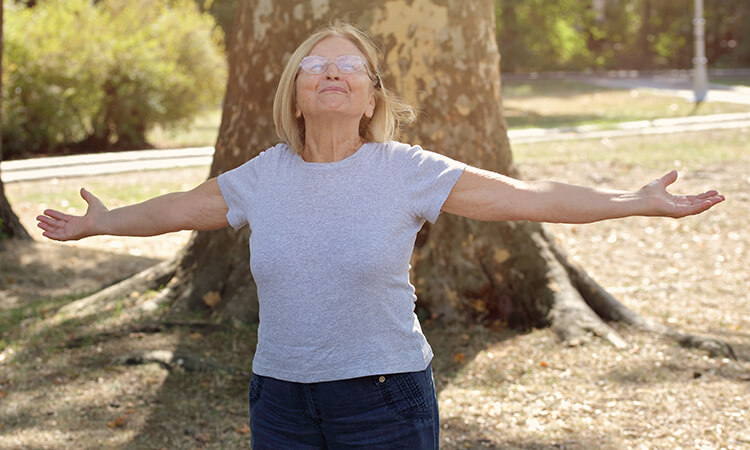
An Ideal Vehicle
In this situation, a therapist tuning in to how immune cells in some location in the tissue are moving in response to the craniosacral rhythm will feel no movement, because there are no immune cells in that tissue and thus nothing there to move.
The tissue itself may or may not be moving in the craniosacral rhythm (it may or may not be restricted in its own right), but there will be no craniosacral rhythm response from the immune system in that location.
If there is inflammation, however, immune cells release histamine, which opens up the capillary beds and allows immune cells to travel out into the surrounding tissue. In this situation, there will be immune cells in the interstitial space, and the therapist will feel those cells moving in response to the craniosacral rhythm.
It is important to distinguish acute inflammation from chronic. Acute inflammation is the body’s normal and appropriate response to trauma, and is characterized by the body rebuilding itself.
The inflammation is in the process of resolving itself. Chronic inflammation, on the other hand, is not a normal response, and is characterized by the body simultaneously rebuilding itself and tearing itself apart.
The body is caught in a loop and the inflammation is unable to resolve. In acute inflammation, because it is the body’s normal response, immune cells in the tissue will generally be moving well in response to the craniosacral rhythm. The tissue itself is often restricted, due to inflammation, but the immune cells will be moving well.
In chronic inflammation, the immune cells will not be moving well in the craniosacral rhythm. The tissue will generally be restricted, and the movement of the immune cells will be restricted as well.
Tuning in to the movement, or lack thereof, of immune cells in response to the craniosacral rhythm allows the CST therapist to directly map inflammation in the body, on a micro level.
With practice, for example, it is possible to palpate a coronary artery and to distinguish the movement in the craniosacral rhythm of the muscular wall of the artery from that of the endothelial lining, from that of the blood inside the artery, and from that of any immune cells within the lining. Normally there should be no immune cells in the endothelial lining, so their presence there is an indication of inflammation.
Becoming a Craniosacral Therapist
Upledger Institute International (UII) teaches CST through a series of four-day seminars. There are four seminars in the core curriculum: CranioSacral Therapy 1, CranioSacral Therapy 2, SomatoEmotional Release 1, and SomatoEmotional Release 2.
In addition to these four courses, UII teaches numerous seminars on more specialized topics in CST, such as pediatrics and obstetrics, working directly on the brain, and as discussed, working directly with the immune system.
UII also has a certification process that is available to students. There are two levels of certification, the first of which can be undertaken after having complete CranioSacral Therapy 2, although the certification process is really meant for students who have been in practice for several years and have a lot of experience doing CST.
To become certified, students must pass an open book essay exam, and they must demonstrate competency in CST during a hands-on practical examination. (Certification does not provide a legal right to practice. Certification can, however, demonstrate to clients the competency of the therapist, and is meant to be a learning experience.)
Autor: Tim Hutton, Ph.D., L.M.P., C.S.T.-D.
Quelle: www.massagemag.com/ (21.12.2017)
Foto: www.massagemag.com/


